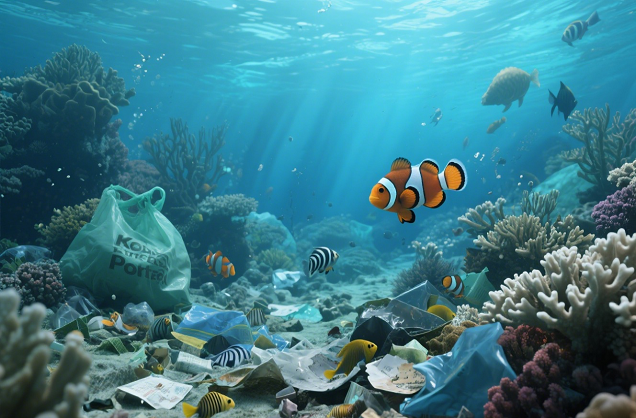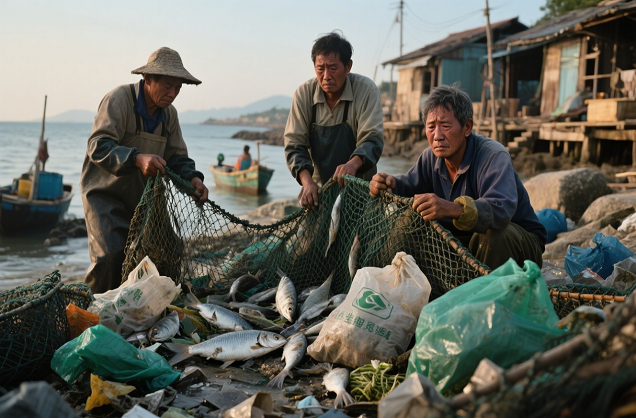The Truth About Eco-Friendly Plastics: Why Cheaper May Be More “Expensive”?
The Hidden Costs of Low-Priced "Eco-Plastics"
In today's environmentally conscious world, many consumers tend to opt for lower-priced "biodegradable plastic" products, believing that they are both cost-effective and environmentally friendly. However, according to a study by the International Sustainable Packaging Alliance (ISPA) in 2024, 60% of low-cost "eco-plastics" on the market actually have a higher life-cycle cost than traditional plastics, and may even pose a greater environmental burden.

Part I: The Hidden Pitfalls of 3 Low-Priced "Eco-Plastics"
1. Oxo-degradable
? Why is it cheap?
Made from traditional PE plastics with degradation agents, production costs are only 5-10% higher than ordinary plastics
No need to change existing production lines, manufacturers can quickly mass produce
? Why is it actually more expensive?
Cost of microplastic pollution control: the EU calculates that its environmental control costs are 3 times higher than that of traditional plastics
Short product life: brittle in 6-12 months, need to be replaced frequently
Brand reputation risk: several countries have banned the use of the bag and may face fines
? Cost comparison (take shopping bags as an example)
Type Unit price Life cycle 3 years Total cost Environmental cost
Traditional PE bag $0.05 2 years $ 0.10 High
Oxo-degradable bags $0.08 8 months $0.36 Very high
Real PHA bags $0.20 3 years $0.20 Low
2. Low starch blended plastics
? Price lure:
30% starch + 70% PP plastics, price 40% lower than pure PLA
? Hidden cost:
Incomplete degradation: Residual plastics contaminate compost piles and require additional sorting
Recycling system exclusion: mixing into traditional plastics recycling streams reduces the quality of the entire batch
Agricultural losses: 8-15% reduction in soil yield when used as mulch. Agricultural losses: when used as mulch, fragments cause soil compaction and reduce yields by 8-15%
3. Off-standard industrial PLA
? Reasons for low prices:
Use of recycled or low purity raw materials
Omit the cost of certified testing for industrial composting
? Subsequent problems:
Need for professional disposal: cannot be handled by the ordinary municipal waste system, and ends up in incineration (increase in carbon emissions)
Performance deficiencies: lack of heat resistance, easily deformed. Performance drawbacks: insufficient heat resistance, easy to deform, poor experience in actual use

PART II: WHOLE LIFE CYCLE COST ANALYSIS
1. Hidden Costs to Consumers
Type of Costs Low-cost "eco-friendly" plastics Up-to-standard eco-friendly plastics
Replacement Frequency 6-12 months 2-3 years
Waste Sorting Time Separate Separate Sorting Required Compostable
Health Risks Possible release of microplastics Non-toxic and non-hazardous
2. Comprehensive Costs to Society (per tonne)
Items Oxide-degradable plastics Up-to-standard PHA plastics
Waste Disposal Fee $320 $80
Water Treatment Costs $150 $0
Soil remediation $90 $0
Total $560 $80

Part III: 4 Steps to Choosing Eco-Friendly Plastics That Really Save Money
1. Calculate True Cost of Use
Formula: (Unit Price ÷ Years of Use) + Estimated Disposal Costs
Example:
Low-Price PLA Cutlery: ($0.1 ÷ 0.5 Years) + $0.05 Disposal Fee = $0.25/year
Up-to-Date PHA Cutlery: ($0.3 ÷ 3 Years) + $0 = $0.1/year
2. Recognize Key Certifications
✅ Economical Choice:
OK Compost HOME
ASTM D6400 (industrial composting)
✅ Long-term investment:
TÜV Marine Degradable
USDA BioPreferred
3. Prioritize multifunctional design
Reusable + compostable products are the most cost-effective
Example:
Crisper made of PHA (compostable after 3 years of use) Compostable after 3 years of use)
PBAT+PLA shopping bag (15kg, 180 days degradation)
4. Focus on Policy Dividends
Use of certified eco-plastics can be eligible for:
Tax exemptions (e.g., China's VAT on comprehensive utilization of resources is refundable)
Subsidies (up to 30% subsidy from the EU's Circular Economy Fund)

Part IV: Recommendation of the King of Cost-Effectiveness in 2024
1. Everyday Goods Category
Ecovative Mycelium Packaging:
15% less expensive than PLA, naturally degrades in 28 days
IKEA has fully adopted
2. Food Packaging Category
TIPA Flexible Films:
Costs 20% more than traditional laminates, but saves 100% on waste disposal
Supplier to Unilever, Nestle
3. Agricultural Goods Category
BASF Ecovio film:
Although the unit price is twice as much as PE film, it can save $200/ha in recycling cost of residual film.
 Significant progress in PBAT/s
Significant progress in PBAT/s
 PLA/PBAT composite film degrad
PLA/PBAT composite film degrad
 A New Choice for Takeaway Pack
A New Choice for Takeaway Pack
 Significant progress in PBAT+s
Significant progress in PBAT+s
CONTACT
Add: Room 4006, No.1 Helong Yiheng Road, Baiyun District, Guangzhou City
Tel: +8613450255948
Wechat : +86-13450255948
Fax: +86-13450255948
E-mail: 13450255948@163.com








